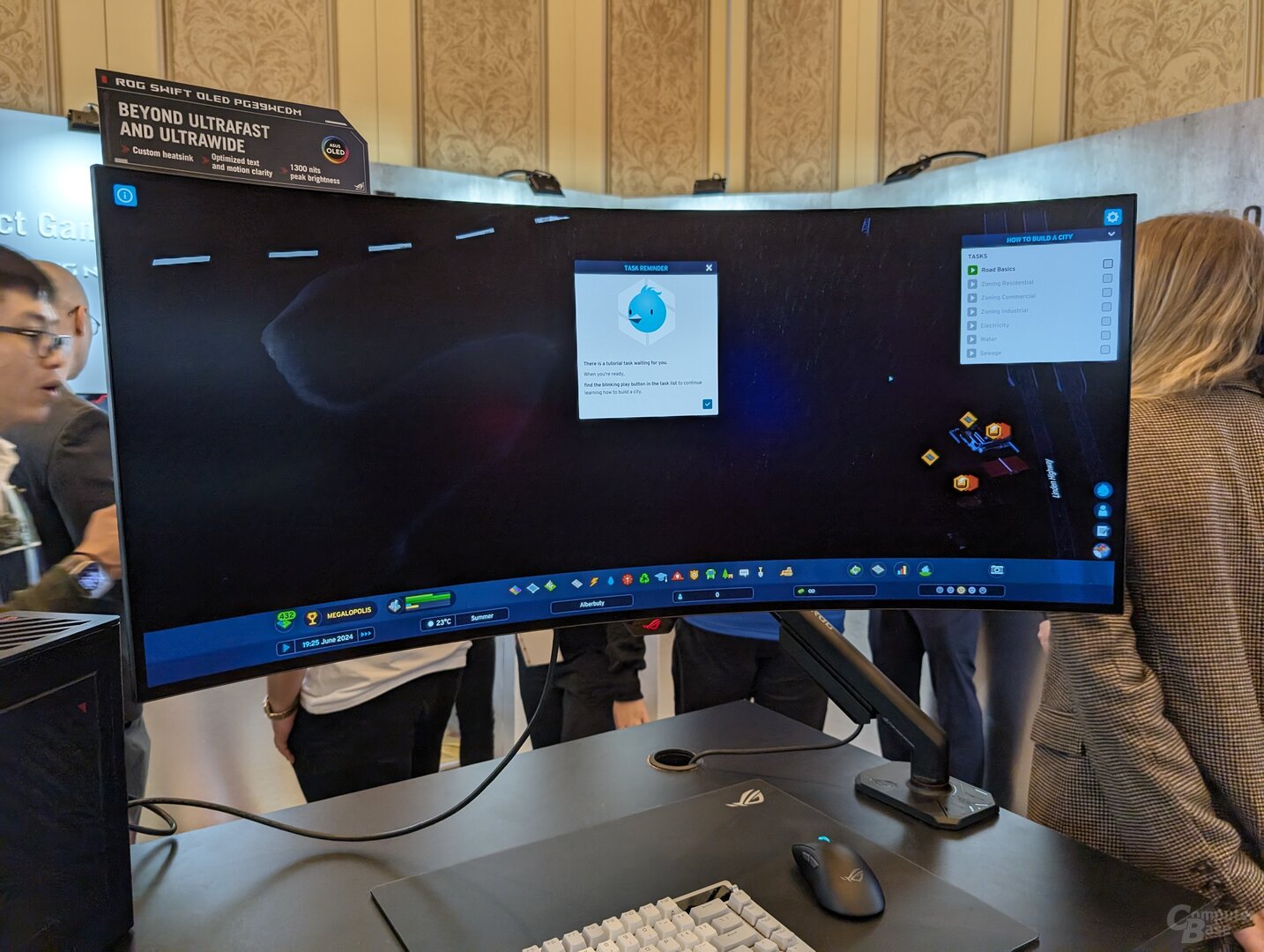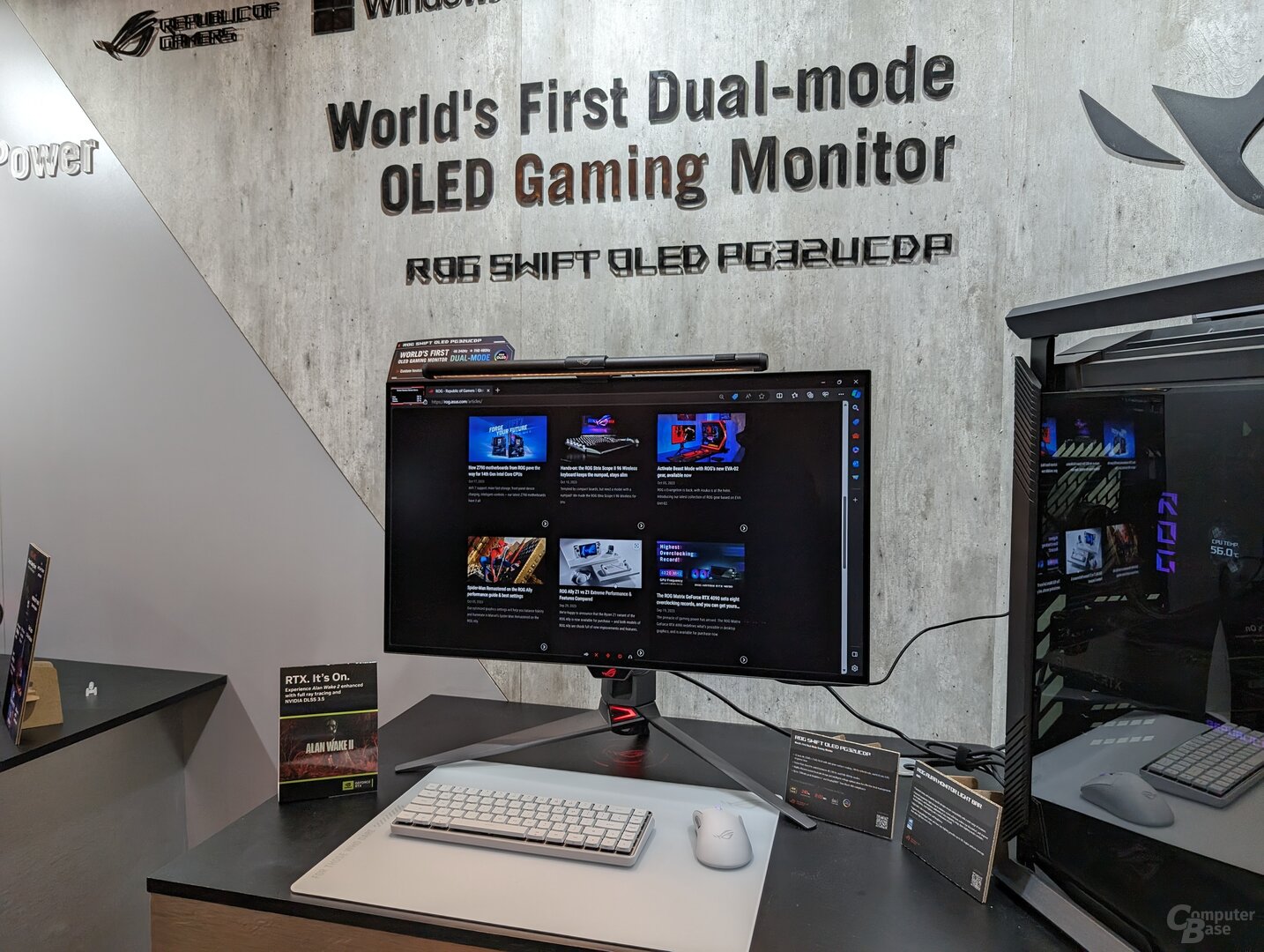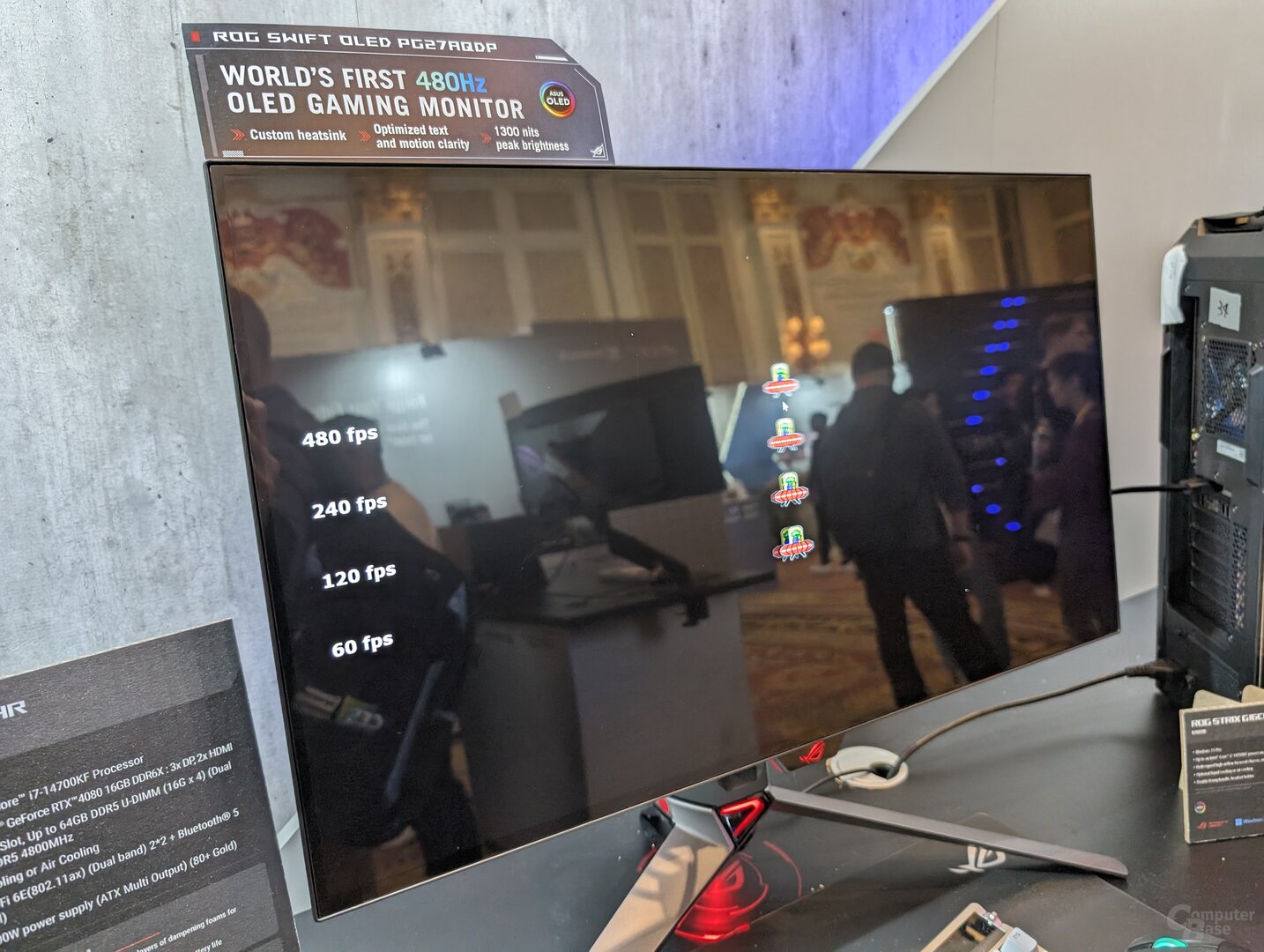
With the ROG Swift OLED PG39WCDM, PG32UCDP and PG27AQDP, Asus is showing off three new OLED displays at CES 2024 in Las Vegas in 39-, 34- and 27-inch sizes, which offer a refresh rate of 240 and sometimes 480 Hz. Like the LG UltraGear 32GS95UE, the PG32UCDP can switch between 4K UHD and 240Hz to Full HD with 480Hz in dual mode.
Rog Swift OLED PG39WCDM
The ROG Swift OLED PG39WCDM is a 39-inch ultra-wide OLED display with 3440 x 1440 pixels and a 21:9 aspect ratio. The variable refresh rate reaches 240Hz, and has a powerful curvature radius of 0.8m. The new model is essentially compatible with the ROG Swift OLED PG34WCDM display shown at Gamescom 2023, but uses 39 inches instead of 34.
-

Rog Swift OLED PG39WCDM
picture 1 From 10
Rog Swift OLED PG32UCDP
Shortly before CES, Asus already announced the 32-inch ROG Swift OLED PG32UCDP, which, like the UltraGear 32GS95UE, is a gamer's OLED monitor that displays the native resolution of 3840 x 2160 pixels at 240Hz, but at the push of a button. The button switches to the mode with 1920 x 1080 pixels and 480 Hz enabled. The PG32UCDP is therefore not identical to the PG32UCDM shown at Gamescom 2023. The latter will be the first ROG monitor to support Dolby Vision.
-

Rog Swift OLED PG32UCDP
picture 1 From 6
Rog Swift OLED PG27AQDP
The ROG Swift OLED PG27AQDP, on the other hand, is a 27-inch OLED display that offers a variable refresh rate of 480Hz. Asus did not provide any details about this screen, but it is likely to use a QHD OLED panel with 2,560 x 1,440 pixels that LG Display introduced shortly before CES.
-

Rog Swift OLED PG27AQDP
picture 1 From 7
Connections to all three displays include DisplayPort 1.4, HDMI 2.1, and 90W USB-C, but Asus only mentions KVM functionality on the ROG Swift OLED PG39WCDM.
LG OLED panels
All three OLED displays use LG's OLED panel with META technology with micro lenses (Micro Lens Array, MLA), which increases screen brightness and reduces light reflections on the screen. MLA uses tiny lenses that focus light in a way that increases brightness at specific points. Asus is talking about 30 percent higher peak brightness compared to its predecessors, which should hit 1,300 cd/m2 with 3 percent white content in HDR mode. All displays are certified to DisplayHDR True Black 400 and in all three new launches, Asus is talking about a dedicated low-temperature heatsink to prevent 'burn-in'.
According to Asus, all three boards have a 0.03ms response time and support FreeSync Premium Pro.
Asus has not yet announced prices or dates for the new screens.
ComputerBase received information about this item from Asus under a non-disclosure agreement. The only requirement was the earliest possible publication date.

Lifelong foodaholic. Professional twitter expert. Organizer. Award-winning internet geek. Coffee advocate.
